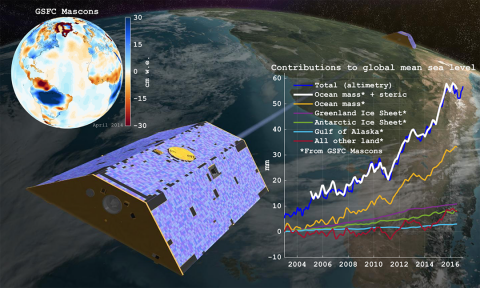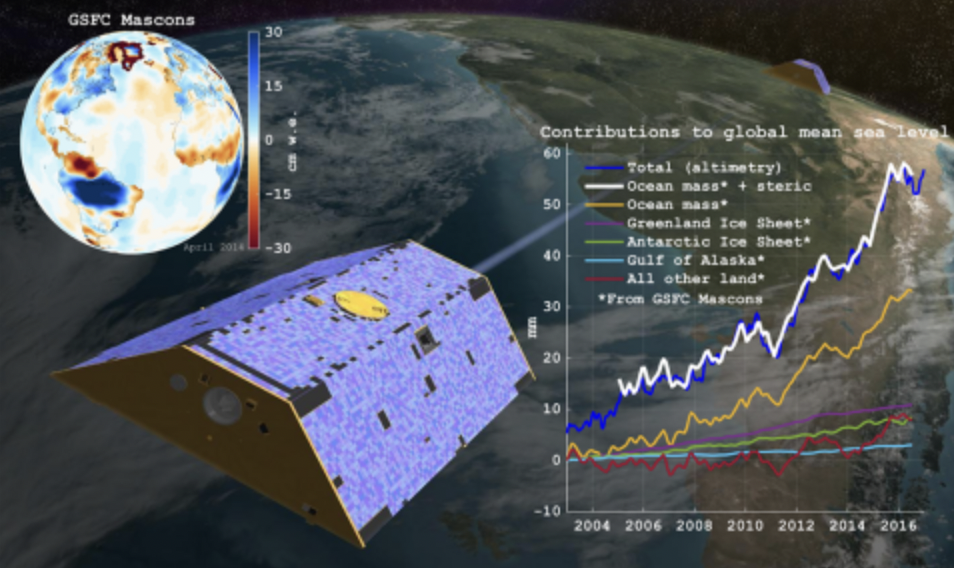Saya bersama beberapa kolega peneliti dari Wageningen University and Research dan
Deltares, menulis sebuah abstrak berjudul “Quantifying aquifer interaction using numerical groundwater flow model evaluated by environmental water tracers data: Application in Bandung groundwater basin, Indonesia” yang akan dipresentasikan di acara Pertemuan Ilmiah Tahunan EGU 2023.
Abstrak selengkapnya sebagai berikut.
Anthropogenic impact on groundwater storage depletion has been detected in many places from catchment to global scales, including in our study area, the Bandung groundwater basin, Indonesia. Groundwater abstraction of various magnitudes, pumped out from numerous depths of aquifers, stimulates different changes in hydraulic heads among vertical subsurface stratifications. Such circumstances generate groundwater movement, where it flows from the upper layer storage to underlying aquifers, referred to as aquifer interaction in this study. Meanwhile, remote-sensing products such as GRACE measure the integrated water storage changes over depth and space, making it difficult to capture and derive the storage internal vertical groundwater fluxes from such signals. As an alternative, environmental water tracers (EWT) have been used to investigate subsurface water movement and to gain a conceptual understanding of groundwater flow dynamics. However, quantitative measurement of the rates of fluxes is not often possible, despite being essential to ensure sustainable groundwater resources management.

In this study, we utilize (a) groundwater flow modeling in conjunction with (b) EWT data to quantify the aquifer interaction driven by multi-layer groundwater abstraction in the Bandung groundwater basin, Indonesia. The available environmental water tracers data include major ion elements (Na+/K+, Ca2+, Mg2+, Cl-, SO42-, HCO3-), stable isotope data (d2H and d18O), and groundwater age estimates (radiocarbon/14C content). These measurements are used to qualitatively evaluate the numerical groundwater flow model. The model, forced by recharge calculated using the hydrological model of wflow_sbm, is calibrated by minimizing the difference between the dynamic steady-state simulated and the observed groundwater levels.
We evaluate the groundwater flow model and the EWT-driven analysis from multiple perspectives. The results suggest that the groundwater recharge is uniformly distributed spatially, the groundwater is flowing regionally from the basin periphery inward to the basin’s center following the topographical distribution, and vertical groundwater fluxes are identified. All three deductions, in a qualitative sense, are agreed upon by both the EWT observations and the groundwater flow model. From the groundwater flow model, we quantify that the aquifer interaction is equivalent to, on average, 0.110 m/year, which is highly significant compared to the other groundwater budgets.
We also determine the unconfined aquifer storage volume decrease, calculated from the change in the groundwater table, that results in an average declining rate of 51 Mm3/year. This number shows that the upper aquifer storage is dwindling at a rate that is disproportionate to its groundwater abstraction, hugely influenced by the aquifer interaction. The storage lost from only this partition contributes up to 60.3% of the total groundwater storage lost, despite contributing to only 32.3% of the groundwater abstraction.
Additionally, we also investigate and examine the correlation between the groundwater level changes and the groundwater abstraction zones. The results of our study confirm that quantification of the aquifer interaction and groundwater level change dynamics driven by multi-layer groundwater abstraction in multi-layer hydrogeological settings is possible by our proposed methods. Applying such methods will assist in deriving basin-scale groundwater policies and management strategies under the changing anthropogenic and climatic factors, thereby ensuring sustainable groundwater management.
Abstrak dalam format PDF dapat diunduh di sini atau di website EGU.
Ulasan tentang satelit GRACE dapat dibaca di sini. Video tentang pengenalan satelit GRACE adalah sebagai berikut.
